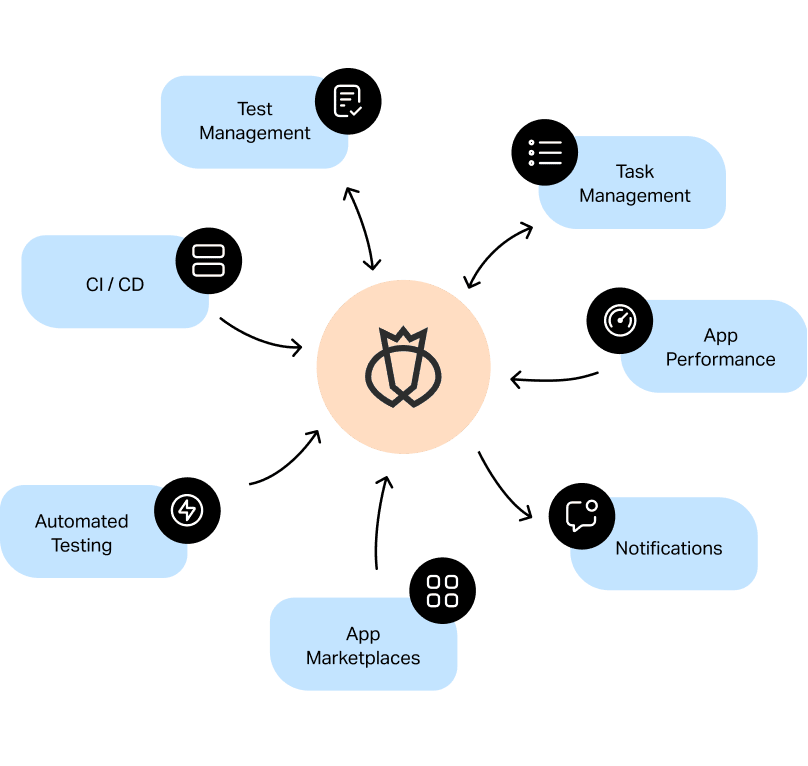The Ultimate Guide to Implementing Automation Testing Successfully
The Ultimate Guide to Implementing Automation Testing Successfully
Blog Article
Ensuring Success in Automation Checking: Secret Metrics, Obstacles, and Solutions Every QA Group Must Know
In the realm of software program high quality guarantee, the landscape of automation testing is ever-evolving, requiring a careful technique to ensure smooth procedures. The journey to mastering automation screening is paved with subtleties that require an eager eye for tracking, evaluation, and continuous enhancement. As the industry thrusts forward, the quest for optimal efficiency in automation testing remains a constant pursuit, urging QA teams to furnish themselves with the expertise and approaches crucial for accomplishment.
Value of Key Metrics
Understanding the significance of crucial metrics is necessary for assessing the efficiency and effectiveness of automation testing processes. Trick metrics work as quantifiable steps that offer beneficial insights into numerous elements of the testing process, such as examination protection, test execution time, issue thickness, and examination situation efficiency. By assessing these metrics, QA groups can identify bottlenecks, ineffectiveness, and areas for enhancement within their automation testing framework.
One essential element of vital metrics is their capacity to track progression and monitor the total health and wellness of the testing procedure (automation testing). They make it possible for stakeholders to make informed decisions based on data-driven insights, which can lead to more efficient screening approaches and much better source allocation. Additionally, essential metrics can help teams set reasonable objectives, measure the success of automation initiatives, and show the ROI of automation screening efforts

Common Challenges Encountered
Challenges commonly encountered in automation screening processes can substantially affect the total performance and efficiency of QA groups. One of the significant challenges is the choice of the best examination cases for automation. Not all examination cases are appropriate for automation, and choosing the wrong ones can bring about wasted time and resources. Furthermore, maintaining examination manuscripts can be a complicated task, especially as the application goes through frequent changes. Examination script upkeep needs constant updates and modifications to ensure they show the current functionality properly. One more common difficulty is the initial investment required for establishing automation frameworks and devices. This can be an obstacle for some organizations, specifically smaller ones with restricted spending plans. Automation screening might not cover all facets of testing, such as usability and individual experience testing, which still call for hands-on treatment. Overcoming these obstacles needs appropriate planning, critical test case choice, durable upkeep processes, adequate resources, and a clear understanding of the limitations of automation testing.
Efficient Solutions for Difficulties
To resolve the challenges run into in automation screening, executing efficient services is important for enhancing the effectiveness and efficiency of QA teams. One vital option is to buy durable training programs for QA groups to ensure they have the required abilities to efficiently use automation tools. Training can connect knowledge voids, improve understanding of automation frameworks, and boost scripting capacities, inevitably leading to more effective examination production and implementation.
Another vital service is to establish clear interaction networks within the QA group and with other stakeholders, such as programmers and project managers. Effective communication aids in aligning expectations, sharing development updates, and without delay addressing problems or roadblocks that might develop throughout the automation screening process.

Surveillance and Analysis Methods
Carrying out efficient tracking and evaluation strategies is important for making sure the success and effectiveness of automation screening processes. In addition, examining test outcomes and metrics gives valuable insights right into the quality of the software application being checked and the effectiveness of the screening approach.
One secret strategy in tracking and evaluation is making use of control panels that combine appropriate metrics and KPIs in a visually obtainable format. These control panels use a comprehensive summary of test implementation status, examination insurance coverage, problem trends, and various other essential information. Routinely assessing and blog analyzing these dashboards can assist QA groups make informed decisions, focus on jobs, and maximize testing initiatives.
Moreover, implementing automated signals and notices based on predefined limits can enhance aggressive tracking and prompt intervention. By establishing alerts for performance inconsistencies or examination failings, groups can attend to issues promptly and avoid them from rising. In general, monitoring and analysis techniques play an essential role in guaranteeing the efficiency and success of automation testing efforts.
Constant Improvement Methods
Enhancing the effectiveness of automation screening procedures necessitates the constant refinement of methodologies and methods. Continuous improvement methods are crucial for QA groups to adjust to advancing innovations and provide premium software application items. One key strategy to enhancing automation screening processes is to carry out routine testimonials and retrospectives. By examining previous testing cycles, teams can identify bottlenecks, inadequacies, and locations for enhancement. Implementing feedback loops and incorporating lessons found out into future screening structures can produce significant enhancements over time.

Final Thought
To conclude, it is essential for QA teams to recognize the key metrics, difficulties, and options in automation screening to make certain success. By meticulously monitoring and examining data, applying efficient options to common difficulties, and continually enhancing strategies, QA groups can optimize their screening processes and supply high-quality software. Following these techniques will inevitably bring about extra reliable and effective automation screening practices.
By evaluating these metrics, QA teams can identify traffic jams, ineffectiveness, and areas for enhancement within their automation screening structure.
Furthermore, vital metrics can help groups established reasonable goals, determine the success of automation initiatives, and demonstrate the ROI of automation screening initiatives.
Difficulties generally experienced in automation testing procedures can considerably impact the overall efficiency and performance of QA teams. Automation testing view website might not cover all aspects of testing, such as functionality and customer experience screening, which still require hand-operated treatment.In final thought, it is crucial for QA teams to recognize the essential metrics, difficulties, and remedies in automation testing to guarantee success.
Report this page